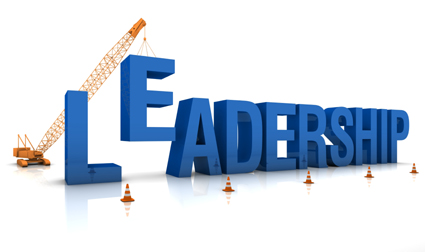by Anita Bowness, global practice leader, Business Consulting, Halogen Software
Like a stone thrown into the water, what leaders do has a ripple effect that extends well beyond those immediately around them. Besides impacting performance, leaders serve as role models, impacting the attitudes, behavior, and organizational culture with almost every interaction they have with their peers and direct reports.

Here are five tips to help ensure the ripples cast by leaders at all levels impact your organization in a positive way.
1. Pick Potential Over Performance
All too often, managers are hired based on previous success, experience, and technical skills over harder-to-quantify leadership potential. According to Gallup research, great leaders have a rare combination of five competencies: They motivate others, assert themselves to overcome obstacles, build strong, trusting relationships, hold themselves and others accountable for high performance, and make informed, unbiased decisions for the benefit of their team and their organization.
However, Gallup reports that only about 10% of employees naturally possess leadership skills, and another 20% of employees can develop as leaders if their organization invested in the appropriate coaching and development plans for them.
This is an area where HR professionals can have great influence by providing assessment tools to uncover those with leadership potential and the resources and tools for leaders to develop key competencies.
HR professionals can incorporate leadership skill assessment throughout the talent management process, including hiring, performance management, employee development, and succession planning to bring data-driven rigor to talent management and succession planning decisions.
2. Provide Early Manager Development
Joint research by DDI and Brandon Hall indicates that 43% of organizations reported little or no effective leadership development for first time leaders and supervisors.
Like other habits, the behavior of leaders are hard to change once they become habitual, so it makes sense to ensure that new managers are provided with the tools, training, and resources needed to acquire and assimilate good leadership skills that an organization values early in their careers.
3. Teach Leaders to Be Self-Aware
The more leaders understand and recognize their own strengths, weaknesses, passions, and doubts, the better they can empathize and support others. The ability of a leader to understand and manage themselves, emotionally and in their actions, can greatly impact the individuals they lead.
Organizations can provide tools such as personality assessments, 360o reviews, mentors, and coaches for employees to better understand themselves and incorporate personal development into their work routine. Journaling and taking the time to debrief projects, events and critical interactions are less formal but no less effective tools for personal development.
4. Develop Coaching Skills
Perhaps the most critical skill for leaders to develop is the ability to provide effective feedback and performance coaching to employees. Helping employees identify performance goals and providing feedback and coaching on an ongoing basis to monitor progress to ensure success are critical leadership skills.
In high-performing organizations, a culture of ongoing performance management enables leaders to build an open and transparent environment to regularly discuss what is and what isn’t working, identify learning opportunities, and establish and follow a career development path.
5. Build on Individual Strengths with Cultural Sensitivity
In an increasingly diverse, global workforce, it is important for leaders to get to know their employees as individuals, understanding their personal values and passions as well as their strengths, development needs, preferred working environment, and career aspirations. This personal approach to performance management enables leaders to build working teams where each member contributes from their strengths, adding up to an impact beyond the sum of the team members.
Organizational savvy should also include an awareness of cultural differences, such as methods of communicating, making decisions, timeliness, handling conflict, and other aspects of working together, in order to head off misunderstandings and create a climate of sharing, learning, and understanding (Erin Meyer’s book, The Culture Map, does an excellent job describing the differences in how individuals from different cultures communicate and share ideas).
The Leadership Ripple Effect
Great leaders create positive ripples by inspiring and leading others, by building a performance culture, and by leaving a legacy of future leaders. HR professionals can help ensure this legacy by implementing effective talent management processes in which high potential leaders receive early and effective development, including interpersonal, cultural, and coaching skills.
 Anita Bowness joined Halogen Software in 2014 with nearly 20 years’ experience in consulting and professional services, the majority of which has been spent enabling client organizations leverage the talent of their workforce to achieve desired strategic results. As global practice leader for business consulting, Anita leads a team of talent management consultants who support Halogen’s clients in the areas of recruitment, onboarding, performance management, learning and development, succession planning, organizational development, competency mapping, and change management. Her consulting experience has spanned many sectors, including IT, government, defense, retail, telecommunications, healthcare, education, logistics, and professional services. Anita holds a Bachelor of Commerce with a Major in HRM from the University of Ottawa, and an Masters in HRM from the University of Leeds. Anita Bowness joined Halogen Software in 2014 with nearly 20 years’ experience in consulting and professional services, the majority of which has been spent enabling client organizations leverage the talent of their workforce to achieve desired strategic results. As global practice leader for business consulting, Anita leads a team of talent management consultants who support Halogen’s clients in the areas of recruitment, onboarding, performance management, learning and development, succession planning, organizational development, competency mapping, and change management. Her consulting experience has spanned many sectors, including IT, government, defense, retail, telecommunications, healthcare, education, logistics, and professional services. Anita holds a Bachelor of Commerce with a Major in HRM from the University of Ottawa, and an Masters in HRM from the University of Leeds. |
